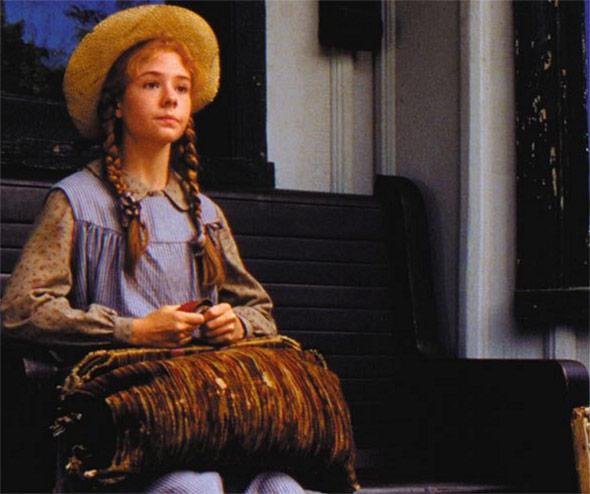The Canadian Broadcasting Corporation is producing a new TV series about one of Canada’s most beloved cultural icons: Anne Shirley, orphan heroine of the Lucy Maud Montgomery novels whose first installment is Anne of Green Gables. Anne’s story has been adapted for screen before; the most famous series, which aired on the CBC in 1985 starring Megan Follows as Anne, was the highest-rated program in Canadian broadcast history for almost two decades. (Canadian Idol broke its record in 2003.) Executive producer Moira Walley-Beckett, best known for her work on Breaking Bad, has explained the appeal she sees in revisiting the character. “Anne’s issues are contemporary issues: feminism, prejudice, bullying and a desire to belong,” she told the CBC.
Anne’s life, narrated in novels published between 1908 and 1939, is far from a parable of female liberation: Her childhood imaginings tend toward a flowery romanticism, and her adult choices toward a dutiful prioritization of her roles as wife and mother. But her struggles to fit into her adoptive community on Prince Edward Island, combined with her fanciful intelligence and ardent independent streak (and the delightful moment when she establishes herself as a bad target for bullies by smashing a slate over the head of future love interest Gilbert Blythe), have made her a patron saint of girls and women who identify as outside-the-mold. To borrow a phrase from writer Chloe Angyal, Anne is a great “stealth feminist”—like Willa Cather’s Ántonia, or Margaret of E.M. Forster’s Howards End.
Since the 1980s television series, Canada has witnessed academic fisticuffs over the meaning of its plucky redhead’s legacy. It all started in the summer of 2000, when a professor named Laura Robinson published the paper “Bosom Friends: Lesbian Desire in L.M. Montgomery’s Anne Books.” Although Anne ultimately marries Gilbert, the paper argued, the romantic passions articulated in the novels are for women. As the biographer Irene Gammel has written, Robinson used Adrienne Rich’s framework of “compulsory heterosexuality” to understand the ways in which the young adult books both “perform” and “subvert” the strictures of Anne’s normative society.
The “‘Bosom Friends affair” quickly spiraled when the Ottawa Citizen sensationalized Robinson’s work with an article titled “ ‘Outrageously Sexual’ Anne Was a Lesbian, Scholar Insists.” But the backlash didn’t prevent Anne fans from carving out a small place for her in the queer literary pantheon. Anne and her childhood best friend, Diana Barry, are also popular subjects for “femslash,” fan fiction that rewrites the romance between female leads. Future Slate advice columnist Mallory Ortberg wrote an entry for Anne and Diana in The Toast’s “Femslash Friday” series in 2013:
Anne loves Gilbert—he is smart and wry and will always get in math fights with her for school medals—but he does not inspire in her the sort of ardency and longing that Diana does. With Gilbert, Anne is content to be peacefully and quietly loved. With Diana, Anne becomes a gentleman.
Excited as I’d be to watch a show that portrays Anne and Diana as star-crossed lovers, I’m skeptical of whether the producers—or the network—will embrace a reading like Ortberg’s. But it’s impossible to do justice to Anne’s proto-feminism without dwelling on her status as an outsider. In her beautiful essay “On Spinsters” in the Los Angeles Review of Books, Briallen Hopper describes the political and cultural significance of women who are “weird, difficult, dissonant, queer” and who flout “the heteronormative assumption that conventional romantic and familial relationships constitute ‘strong ties’ while other forms of relationships are ‘weak ties.’ ” Anne is not a spinster (though she does resist marriage for a phase), and she may or may not be “queer” (in the contemporary sense). But as an orphan and a daydreamer, she is a natural misfit whose thirst for family and community opens her up to “ties” of all varieties. She finds “kindred spirits” in people both beautiful (like Diana) and, in the eyes of others, odd (like her quiet adoptive father, Matthew Cuthbert).
Anne is also, however, hyperattuned to the boundary between insider and outsider. One of the first things she articulates to Matthew on her way home to Green Gables is her desperate longing to be pretty and her hatred of her red hair—a badge of idiosyncrasy. Her status as “stealth feminist” is not without its complications. I remember my childhood anguish when, at the end of Green Gables, Anne gives up her college scholarship to return home and care for Matthew’s aging sister, Marilla, after Matthew’s sudden death. Similarly, the writer Sarah Mesle has described, as an adolescent,
feeling betrayed by the discovery that the character I’d loved wasn’t someone I wanted to be. After all, Anne is smart but would rather be pretty; she worries too much about her red hair; her imagination never gets her anywhere but married. … In a world that already pressures us to be friendly at all costs, do we really need Anne’s example of relentless generosity?
That generosity is both Anne’s superpower and her Achilles’ heel. Today, her sacrifice for Marilla strikes me as smotheringly traditional and courageously kind. It also arises out of a situation that continues to feel modern, in which a woman must balance her ambitions against a caregiver’s second shift. How many contemporary viewers would recognize the rewards that Anne finds in the role of empath but also the way that her world conscripts her into the part? Anne does go on to finish her degree but also to live a more or less average life as a wife, mother, and schoolteacher. She’s not a feminist trailblazer. Instead of tidy empowerment, she gives young readers an example of a life in which the efforts to satisfy the demands of community and society aren’t smoothed out but remain visible, in all their tradeoffs and ambivalence. That’s a feminist parable that remains relevant and compelling, and one that the creators of the new CBC show should make.
